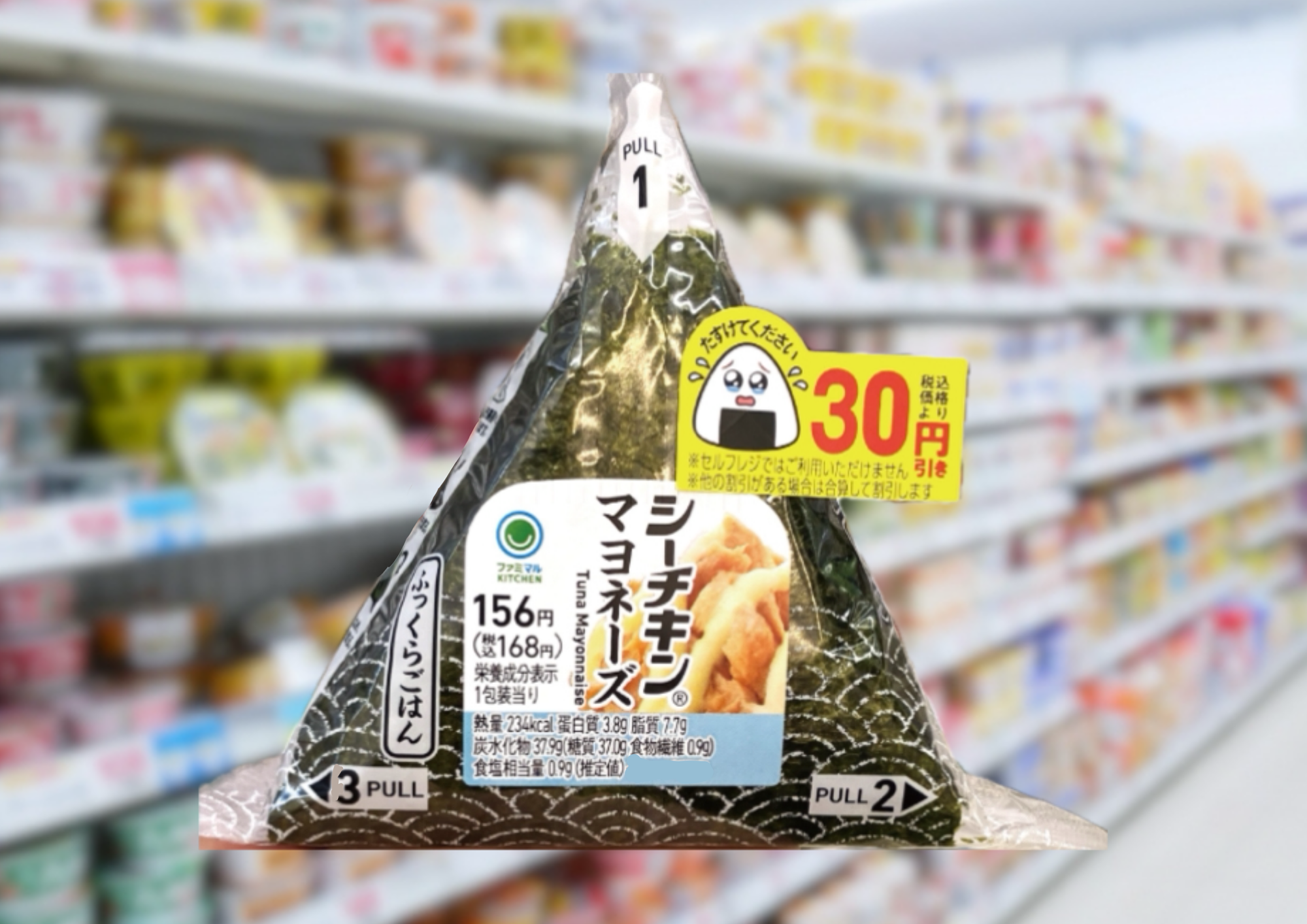Hello! My name is Miyabi, a Japanese living in Japan.
Welcome to Japan Phrase Adventure, a blog for learners of Japanese language and culture.
Today’s article is all about おにぎり (onigiri / rice ball), one of Japan’s most beloved foods. Let’s learn Japanese while exploring Japanese cuisine together!
Important note for readers: This blog is written in English with some Japanese words included (kanji, hiragana, romaji). If your browser or Google Translate automatically translates the page into another language, the Japanese characters may not display correctly. To enjoy this article properly, please switch off automatic translation and read it in English.
What is Onigiri (おにぎり / omusubi)?
In Japan, you will often hear two words for the same food:
・おにぎり (onigiri / rice ball)
・おむすび (omusubi / rice ball)
Both words refer to the same dish: a ball or triangle of rice, usually wrapped in seaweed (のり / nori) and filled with a savory or salty ingredient.
The word おにぎり (onigiri) comes from the verb 握る (にぎる / nigiru = “to grasp, to squeeze”), because the rice was traditionally shaped by hand.
The word おむすび (omusubi) comes from the verb 結ぶ (むすぶ / musubu = “to tie, to connect”), symbolizing the bond between rice and people, and even spiritual connections in Shinto beliefs.
In modern Japan:
・At convenience stores (コンビニ / konbini), onigiri are made by machines for hygiene and efficiency.
・At restaurants or omusubi specialty shops, some rice balls are still handmade. Chefs sprinkle salt on their hands and gently press the rice, which allows them to season it naturally.
・Hygiene note: Japanese chefs are trained in strict sanitary standards, so “handmade” food is completely safe here. Unlike daily casual handwashing, professional food preparation follows a different level of cleanliness.
For foreign visitors who might hesitate about “hand-shaped food,” it’s important to know that Japanese onigiri are safe, whether machine-made or handmade.
Why Onigiri is So Popular in Japan
Onigiri has been eaten in Japan for over 1,000 years. It was historically a portable meal for soldiers, farmers, and travelers. Today, it remains one of the most common and affordable foods in daily life.
Reasons for popularity:
1. Convenient – perfect for breakfast, lunch, or a quick snack.
2. Affordable – usually around 100–200 yen at a convenience store.
3. Variety – endless fillings and flavors.
4. Cultural connection – often made by parents for children’s lunchboxes.
It is no exaggeration to say that onigiri is the soul food of Japan.
Common Fillings of Onigiri (具材 / guzai = fillings)
For Japanese learners, here are the most typical fillings, with explanations for those who have never tried them before.
1. 鮭 (しゃけ / shake / salmon)
Grilled or salted salmon, flaked into pieces.
・Taste: savory, slightly salty, very familiar for foreigners.
・Why popular: Similar to grilled salmon in Western cuisine, so it feels safe and delicious.
2. ツナマヨ (つなまよ / tsuna mayo / tuna mayonnaise)
Also known as シーチキンマヨ (shiichikin mayo / Sea Chicken mayo).
・Note: “Sea Chicken” is actually a Japanese brand name for canned tuna.
・Taste: creamy, mild, universally loved.
・Why popular: Many foreigners choose this first because it feels similar to tuna salad sandwiches.
3. 梅干し (うめぼし / umeboshi / pickled plum)
A very traditional filling.
・What it is: Japanese plums preserved in salt and red shiso leaves.
・Taste: extremely salty and sour.
・Why Japanese like it: acts as a natural preservative, refreshing flavor.
・Foreigners’ reaction: often surprising, sometimes too strong.
4. 昆布 (こんぶ / konbu / kelp seaweed)
・What it is: strips of kelp simmered in soy sauce and sugar until soft.
・Taste: sweet-savory, full of umami.
・Note: If you like seaweed snacks, you might enjoy this. If not, it may feel unusual.
5. 明太子 (めんたいこ / mentaiko / spicy pollock roe)
・What it is: fish eggs (pollock roe) marinated in chili pepper.
・Taste: salty, spicy, with a soft popping texture.
・Why popular: Japanese people enjoy it with rice and pasta.
・Foreigners’ reaction: adventurous eaters often love it; others may find fish eggs strange.
Other Common Fillings
・おかか (okaka / bonito flakes with soy sauce)
・たらこ (tarako / plain salted pollock roe)
・高菜 (takana / pickled mustard greens)
・いくら (ikura / salmon roe)
Foreigners’ Favorite Onigiri Fillings
Based on surveys and foreign residents’ voices, here is a ranking:
1. ツナマヨ (Tuna mayo) – creamy, safe choice. 鮭 (Shake, salmon) – familiar and tasty.
2. 明太子 (Mentaiko, spicy roe) – for adventurous food lovers.
3. 昆布 (Konbu, kelp) – sweet-savory, authentic Japanese taste.
4. エビマヨ (Ebi mayo, shrimp with mayonnaise) – similar to seafood salads abroad.
Fillings That Foreigners Often Find Challenging
1. 梅干し (Umeboshi, pickled plum) – too sour and salty for many.
2. おかか (Okaka, bonito flakes) – strong fish taste.
3. 高菜 (Takana, pickled mustard greens) – fermented, sharp flavor.
4. 昆布 (Konbu, kelp) – seaweed taste can be divisive.
5. いくら (Ikura, salmon roe) – unusual texture.
Onigiri at Convenience Stores
Japanese convenience stores (コンビニ / konbini) are famous for their food, and onigiri is one of their best-selling products.
・Widely available 24/7.
・Affordable (about $1–2 USD).
・Always fresh, thanks to daily deliveries.
・Often wrapped in special packaging that keeps the seaweed crispy until you eat.
For travelers, buying onigiri from a convenience store is one of the easiest ways to experience Japanese food culture.
Tips for Foreign Visitors
・Try different fillings until you find your favorite.
・Don’t be afraid of the word おにぎり (onigiri) – it’s simple rice, safe and delicious.
・If you want the safest choice: start with ツナマヨ (tuna mayo) or 鮭 (salmon).
・If you want a traditional Japanese taste: try 梅干し (umeboshi) or 昆布 (konbu).
・For a challenge: taste 明太子 (mentaiko) or いくら (ikura).
Final Thoughts
Onigiri, also known as おにぎり (onigiri) or おむすび (omusubi), is much more than just a rice ball. It is a cultural symbol, a comfort food, and a convenient meal for everyday life in Japan.
Next time you visit Japan, stop by a convenience store or an omusubi specialty shop. Whether handmade or machine-made, each rice ball carries the taste of Japanese tradition.
So, are you ready to discover your favorite onigiri?



